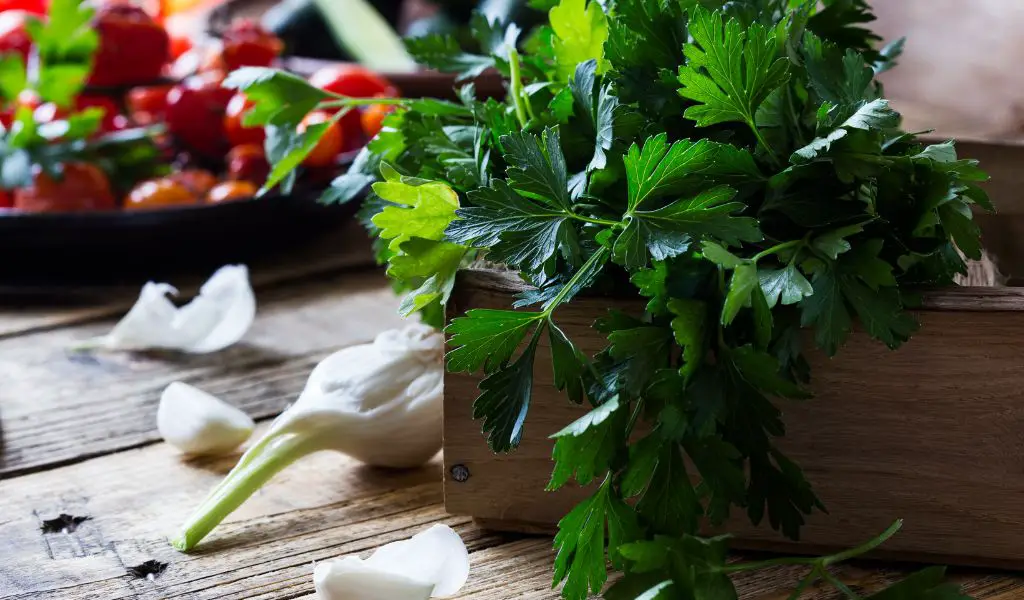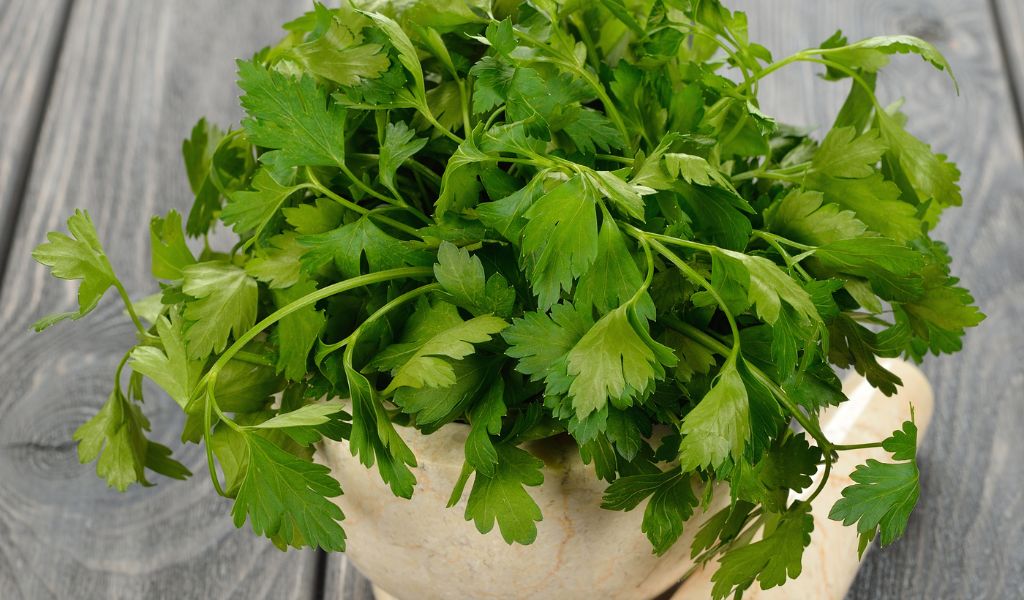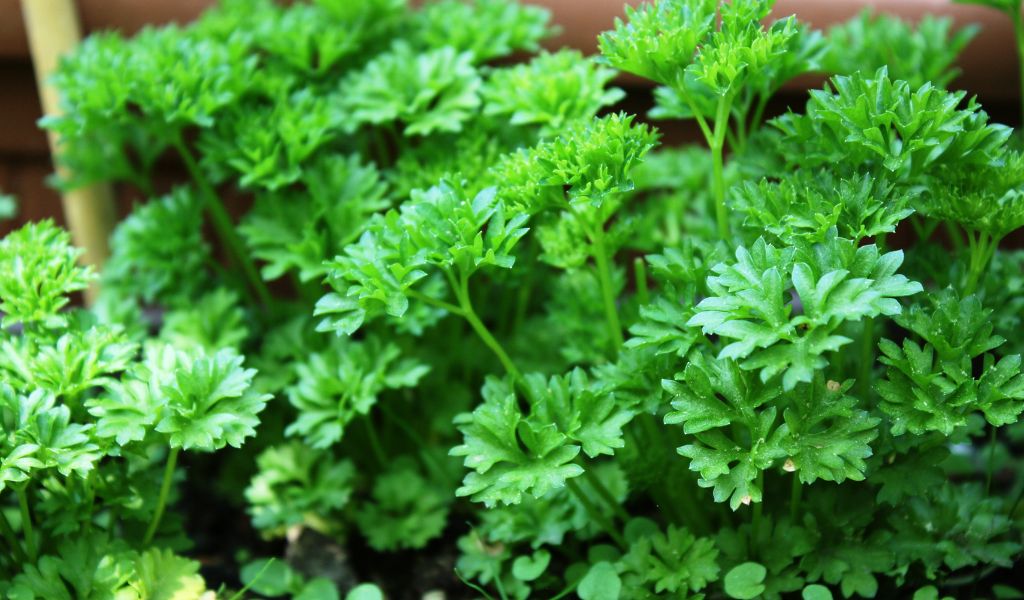The Importance of Parsley in Cooking
Parsley is a versatile herb that has been used in cooking for centuries. It is a staple ingredient in many cuisines around the world, and its fresh, bright flavor can enhance the taste of any dish.
Parsley is not only used as a garnish but also as an essential ingredient in recipes such as pesto, tabbouleh, and chimichurri. Its vitamin-rich leaves are also known to have many health benefits.
Brief Overview of the Question: Can You Plant Store Bought Parsley?
If you are someone who loves using parsley in your recipes, you may have wondered if it is possible to plant store-bought parsley instead of always buying it from the grocery store.
The answer is yes! It is possible to plant store-bought parsley and grow your own fresh supply at home.
However, there are certain things you need to know before getting started. In this article, we will provide detailed information on how to successfully plant store-bought parsley at home.
We will discuss the different types of store-bought parsley available, how to identify healthy specimens, and the best time to purchase them.
We will also cover everything from preparing soil for planting and choosing a suitable location to caring for your planted parsley including watering requirements and common pests that may affect it.
With proper care and attention, growing your own fresh supply of parsley can be rewarding both financially and nutritionally. Follow along as we explore everything you need to know about planting store-bought parsley!

Understanding Store Bought Parsley
Parsley is a popular herb used in many dishes for flavoring and garnishing. However, not all store-bought parsley is created equal. Before you start planting, it’s essential to understand the various types of store-bought parsley and how to identify the right one for planting.
Different Types of Store Bought Parsley
There are two main types of parsley: curly-leafed and Italian (flat-leafed). Curly-leafed parsley has a milder taste and is commonly used as a garnish.
On the other hand, Italian (flat-leaf) parsley has a robust flavor and is often used in cooking. Both types of parsley can be bought from grocery stores or nurseries.
When purchasing store-bought parsley, make sure to read the label carefully to determine which type you’re buying. Some packages may include both types of parsley mixed together.
How to Identify Healthy Store Bought Parsley
Now that you understand the different types of store-bought parsley available let’s talk about identifying healthy plants:
Look for green leaves: choose a plant with lush green leaves that have no signs of yellowing or wilting.
Avoid roots that are too long: Parsley can be grown in containers or pots, but if left too long in them, its roots can outgrow their space. Avoid plants with roots that are poking out through the bottom holes of their containers.
No signs of pests or diseases:Parsley plants may sometimes be infected with pests such as spider mites or aphids. It would help if you made sure there are no visible signs like white webbing on your plant or mottled leaves which could indicate the presence of spider mites.
The Ideal Time to Purchase Store Bought Parsley
The best time to buy your store-bought parsley depends on when you want to plant it. If you plan on planting it outdoors, it’s best to wait until after the last frost in your area as parsley cannot withstand freezing temperatures. On the other hand, if you plan on growing parsley indoors, you can purchase it all year round.
Buying during the late summer months and fall can be a wise choice since plants have had access to sunlight for a longer period before being harvested and transported. Overall, when buying store-bought parsley for planting purposes, choose healthy plants with green leaves and no visible signs of pests or diseases.
Pay attention to their roots and avoid long or root-bound plants. Make sure to purchase them at an appropriate time according to your planting plans.

Planting Store Bought Parsley
Preparing the Soil for Planting
Before planting store bought parsley, the soil needs to be prepared by removing any weeds and loosening up the soil. Parsley requires well-drained soil that is rich in organic matter.
A good way to achieve this is by adding compost or aged manure to the soil a few weeks before planting. This will help improve the soil fertility and also retain moisture.
It’s important not to add too much fertilizer as this can cause the leaves of parsley to grow too large and reduce their flavor intensity. Parsley prefers a slightly acidic soil with a pH of around 6-7.
Choosing the Right Location for Planting
Parsley needs plenty of sunlight, but it also requires protection from direct sunlight during hot summer months. Therefore, it’s best to choose a location that receives partial shade during some part of the day, especially in warmer climates. It’s also important to consider air circulation when choosing a location for planting parsley as it helps prevent diseases from developing on plants.
Another factor to consider is water drainage as parsley does not tolerate standing water around its roots. Therefore, it’s best not to plant parsley in low-lying areas or where water tends to accumulate after rainfall.
Transplanting Store Bought Parsley into the Garden
Store bought parsley can be transplanted into your garden using either seeds or cuttings from mature plants. If you are using cuttings, select plants with healthy leaves and roots.
Dig holes wider than needed for each plant and mix in some compost or aged manure along with some potting mix into each hole before placing your plants. Be sure not to overcrowd them as they need space for healthy growth.
Once planted, gently tamp down around each plant and water thoroughly until established. It’s important to keep the soil moist during the early stages of growth until the plants have become established.
Caring for Planted Store Bought Parsley
Watering and Fertilizing Requirements
Parsley requires consistent moisture to thrive, so it’s important to water your plants regularly. However, be careful not to overwater them as that can lead to root rot. The best way to determine when your parsley needs water is by sticking your finger about an inch into the soil.
If it feels dry, it’s time to water. During hot and dry weather conditions, water your parsley daily or every other day.
To keep your parsley healthy and vibrant, you should fertilize it once a month with a balanced fertilizer that contains equal parts of nitrogen, phosphorus, and potassium (NPK). Don’t over-fertilize as this can cause more harm than good and lead to plant burn.
Pruning and Harvesting Techniques
Pruning is essential in maintaining healthy growth of parsley plants. By trimming the top half-inch of new growth every two weeks or so during the growing season will encourage bushier growth while preventing bolting (faster growth with less flavor) which can occur when the plant reaches its maturity. Harvesting parsley from time-to-time is also important in keeping the plant healthy.
When harvesting leaves from a mature plant, remove leaves from the outer edge of the plant first since these are usually older than those near the center. To ensure continued production throughout growing season avoid removing more than one-third of any leafy stem at once.
Common Pests and Diseases that Affect Planted Store Bought Parsley
Diseases: The most common disease affecting parsley includes root rot caused by overwatering or poorly drained soil. Another disease is leaf spot which shows up as brown spots on leaves caused by fungus spurred by wet foliage. Pests: Aphids are tiny insects that suck sap out of parsley leaves causing them to curl and turn yellow.
If caught early, a strong blast of water from a hose can dislodge aphids. Other pests include slugs and snails which can be deterred with copper tape or copper mesh around the base of the plant.

Benefits of Planting Store Bought Parsley
Improving Air Quality in Your Home or Garden
Did you know that plants are natural air purifiers? They absorb harmful toxins and pollutants from the air, making it cleaner and healthier to breathe. Parsley is one such plant that has been shown to improve indoor air quality.
By planting store bought parsley in your home or garden, you can enjoy the benefits of fresh herbs while also creating a healthier environment for yourself and your family. In addition to its air purifying properties, parsley is also a natural deodorizer.
It can help eliminate unpleasant odors from cooking, pets, or other sources in your home. The fresh scent of parsley will leave your space smelling clean and refreshed.
Making Your Own Fresh Herbs at Home
There’s nothing quite like the taste of fresh herbs in your cooking. Unfortunately, buying fresh herbs from the grocery store can be expensive and wasteful – often they come in large bunches when you only need a few sprigs.
By planting store bought parsley at home, you’ll always have a supply of fresh herbs on hand when you need them. Growing your own herbs is also a rewarding experience.
Watching them grow from tiny seedlings into full-grown plants is satisfying and can even be therapeutic. Plus, it’s an easy way to add some greenery to your home or garden.
Saving Money on Buying Herbs from Stores
As mentioned earlier, buying fresh herbs from the store can be costly – especially if you use them frequently in your cooking. By planting store bought parsley at home, you’ll save money on groceries while also ensuring that you always have fresh herbs available when needed.
Not only that but growing parsley is relatively low maintenance – all it needs is sunlight and water to thrive. You don’t need any special equipment or expertise to grow parsley successfully.
So, not only will you save money on buying herbs from the store, but you’ll also save money on gardening supplies and equipment. Planting store bought parsley offers many benefits beyond just having a fresh supply of herbs for your cooking.
It can help improve air quality in your home or garden, provide a rewarding hobby, and save you money in the long run. Don’t be afraid to try your hand at growing parsley – it’s easy and affordable!
Conclusion and final thoughts 💭
After reading this article, it is clear that planting store-bought parsley is not only possible but also easy. The process of planting and caring for this herb requires a little effort, but the rewards are numerous. Not only can you have fresh, homegrown parsley in your dishes but also improve air quality in your home or garden.
We have discussed how to identify healthy store-bought parsley and the ideal time to purchase it. We have also gone through the step-by-step process of planting store-bought parsley and how to care for it properly.
With this knowledge, anyone can plant and grow their own parsley at home. It is important to reiterate that with proper care and attention, store-bought parsley can thrive just like any other herb planted from seed or seedling.
Don’t be discouraged if you don’t have a green thumb or lack gardening experience; growing herbs like parsley can be a great way to start learning and developing a new hobby. We encourage readers to try planting their own herbs at home.
Not only does it save money on buying herbs from stores, but it also provides a sense of satisfaction when using your freshly grown herbs in cooking. So go ahead and give it a try – you might be surprised by how easy it is!




